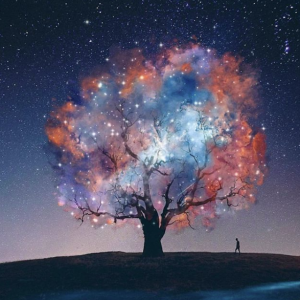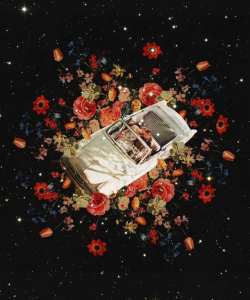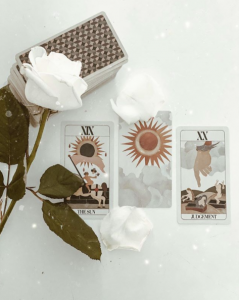Goddess Vibes: The Mythology of the 12 Zodiac Signs
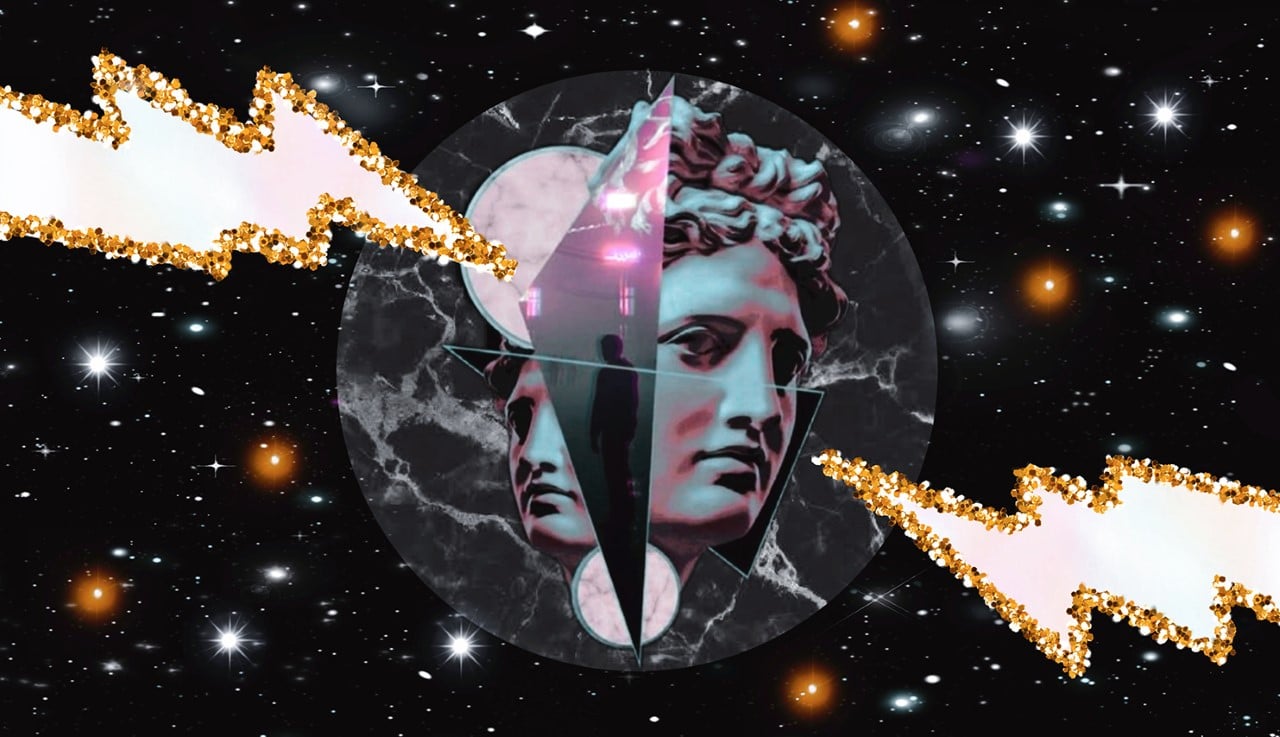
The archetypes of the zodiac have a rich and varied history of associated mythology, not only from the ancient Greeks, but also the Egyptian and Mesopotamian cultures. Beyond simply identifying the mythology of the 12 zodiac signs, we can learn to use these myths as tools.
The great scholar Joseph Campbell saw myths fulfilling four levels of functions. At the mystical level, myths are tools to reconnect us to our sense of awe and wonder. Yes, these tales are fantastic—they are meant to be. An experience of the extraordinary opens our minds to infinite possibilities.
At the cosmological level, myths help us form an image and story of how the world came to be and how we find meaning. Myths help us to wrap our minds around the unfathomable mysteries of life.
At the sociological level, the mythology of the 12 zodiac signs conveys information about social order and codes of moral conduct. The final function of myth is pedagogical, which means they are tools which contain lessons on living. They show us how to fully become ourselves.
Below, the mythology that characterizes each sign of the zodiac.
Aries
The central myth of Aries is the Chrysomallus, a fantastic flying golden ram created by Hermes (Mercury) to rescue the children Phrixus and Helle from their wicked stepmother. After the task was complete, the ram was sacrificed to Zeus, and its golden fleece was hung in an oak in a grove sacred to Ares (Mars).
The fleece was protected by brass-hoofed, fire-breathing bulls and a dragon that was eternally awake. The theme of a serpent and a tree is universal, showing up first in the Mesopotamian myth of Inanna and later in Genesis. From a shamanic perspective, the tree is the link between the three worlds, and in turn, the three selves. The dragon represents the lower self which lusts for power, similar to the Freudian id.
The bulls represent the middle world, where the animal nature is relatively controlled and tamed, what Freud called the ego. The fleece represents our higher nature, our spiritual and moral side, and also our ideal self, what Freud called the superego. In order to claim the golden fleece, the hero Jason required the help of the sorceress Medea. These two represent the alchemical or sacred marriage (hieros gamos) of masculine/feminine aspects (which Freud’s student Carl Jung called anima/animus) that any hero must achieve in order to become whole, and thereby come to know their higher or ideal self—symbolized here by the golden fleece.
Taurus
There are at least three myths and several variants where Zeus transforms himself or his lover into a bull or cow. Zeus transformed Io, a mortal with whom he had an affair, into a cow to hide her from his wife, the goddess Hera. Alas, the deception did not work and there ensued a complex struggle. Europa also becomes Zeus’ lover—though it is Zeus who transforms into a white bull in order to abduct her.
These first two myths appear primarily mystical and cosmological, but the third conveys sociological and pedagogical themes. Europa’s descendent Minos aspired to be King and claimed that the gods answered his prayers in order to win favor. He asked Poseidon to send him a bull and promised to sacrifice it in the sea god’s honor. But when the divine bull appeared Minos kept it and sacrificed another, instead.
Poseidon turned the bull wild and instilled in Minos’ wife Pasiphae a bestial lust, whereby she gave birth to the Minotaur. The moral of the story appears to be about the sacredness of contracts—especially those entered into with the gods.
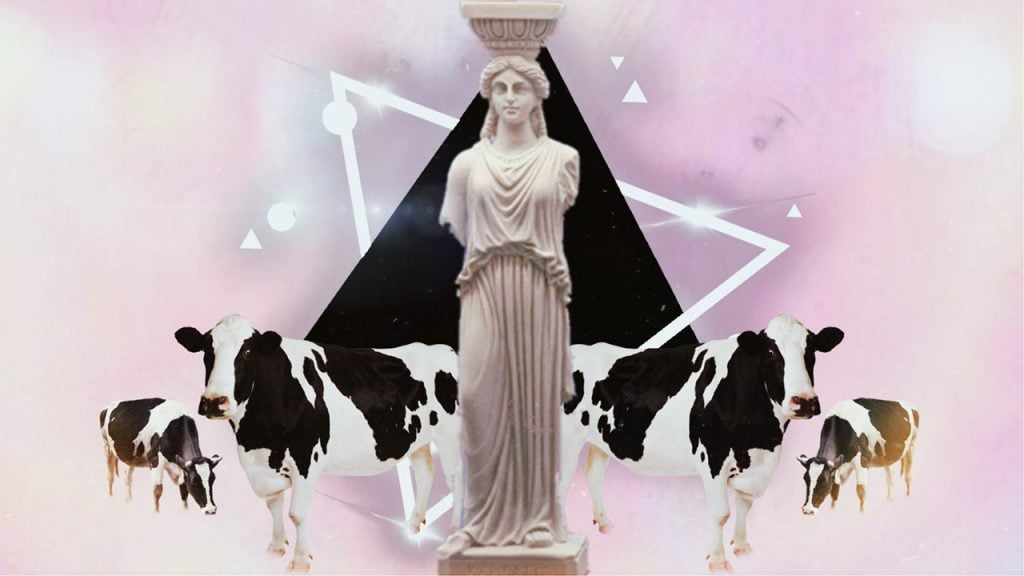
Gemini
Castor and Pollux (also called the Dioscuri) were twin half-brothers said to have been born from eggs along with their sisters Helen and Clytemnestra. Their mother, Leda, was seduced by Zeus in the form of a swan. But as Leda had been with her husband King Tyndareus the same night, half of the children were mortal (Castor) and half immortal (Pollux).
Later in life, the twins abducted women already betrothed to their cousins, resulting in a family feud in which Castor was killed. Zeus allowed Pollux to let his brother share in his immortality, and the two were transformed into stars, alternating between Hades and Olympus (their stars are only visible during half of the year).
On the more positive note, the twins were also heroes who sailed with the Argonauts and participated in the hunting of the Calydonian Boar. They are regarded as helpers of humanity, patrons of travelers, sailors, and athletes. This myth appears to be both a cosmological and sociological statement about the inescapable nature of duality.
Cancer
The goddess Hera sent a great crab to aid the Hydra—a serpentine monster—in its battle against Hercules. Hercules’ Twelve Labors figure in the origin stories of more than one of the zodiac signs. The popular conception of these stories is that Hercules was ridding the world of evil beasts, which were often commanded by his spiteful arch-nemesis, Hera. However, some have reframed Hercules’ labors as a war on the older feminine nature religions of the countryside; an establishment of the urban, male-dominated Olympian pantheon. Whichever view you take, the moral of the story is the same: even when ultimately unsuccessful, loyalty and service to the gods are rewarded with immortality.
Leo
The first of Hercules’ labors was to kill the Nemean Lion, a huge beast whose hide was impervious to weapons. Ostensibly, Hercules’ labors were as penance for the crime of killing his wife and children in a fit of madness. The difference between punishment and penance is that penance has the power to be redemptive; by willfully submitting to the labors and making them personally meaningful, Hercules is ultimately transformed by them. T
To kill the lion, Hercules blocked up one exit of its lair, then entered the other to wrestle and strangle the lion. Hercules then donned the skin of the lion as armor to aid him in the rest of his labors. The moral of the story seems to be that the courage to admit our mistakes, accepting the consequences of our actions, and confronting them head-on, makes us stronger and more resilient. In short, our inner strength becomes an outer armor.
Virgo
The myth of the harvest goddess Demeter offers the best fit for Virgo. After Hades abducted her daughter Persephone—and used pomegranate seeds to trap her in the underworld for half of the year—Demeter withheld of the natural bounty of the earth, a cosmological explanation for the dark time of year when grain won’t grow. But Persephone is also looked after by the goddess Hecate in some versions, causing some to see this as a version of the Triple Goddess. In any event, Demeter’s gift of agriculture to humanity is just as revolutionary as that of fire from Prometheus.
One lesser-known character in this mythos is Triptolemus, a young boy whose family was charitable and hospitable to the goddess during her wanderings. As a reward, Triptolemus was taught the art of agriculture and given a chariot drawn by winged dragons with which to spread it across the world. In addition to another statement on duality—the mutable signs are often called bi-corporeal or double-bodied—this myth seems to repeat the sociological themes of the role of the feminine as nurturer, the promise of divine rewards for the virtues of hospitality and charity, and the sacred and mystical side of agriculture.
Find out what’s in the cards for your love life!
Libra
Astraea was a goddess of justice, and the last of the immortals to dwell on the earth with humans. But even she eventually abandoned the earth, driven away by the increasing lawlessness of humans. The Greeks thought that humanity originated during a golden age and had increasingly become base and warlike, but some held hope that Astraea would return and bring with her another golden age. Some see the Renaissance as one such time (Elizabeth I of England was thought by some to personify Astraea). Because Libra marks the time where the darker seasons of the year begin, this descent of humanity from a golden state to a darker baser form offers another way of personifying the forces of nature and the duality of the seasons. In this case, the fabled return of Astraea is analogous to the return of the light in the spring.
Scorpio
In the myth of Scorpius, we find yet another example of one of the great goddesses seeking to counterbalance the excesses of masculine figures. In this case, Orion, the great hunter, boasted that his power was so great he could kill any living thing on earth. Hearing this dangerous boast, Gaia (mother earth) sent forth a great scorpion. Tales differ on the exact nature of Orion’s demise, but Zeus eventually put Scorpius in the heavens opposite to Orion, so that the scorpion can be seen chasing the great hunter out of the sky—as Scorpius rises, Orion disappears below the horizon. This is yet another commentary on the cosmological state of balance between various dualities, but it’s also a morality tale. For the Greeks, hubris was a grave sin.
Sagittarius
There are two separate myths connected to the Archer, but both share themes of knowledge, art, and wisdom. The most well-known myth is that of Chiron, the centaur and revered teacher of many Greek heroes. Chiron was wise and skilled not only in the arts of war but also healing and philosophy. He was ultimately a tragic figure who, due to the bungling of Hercules, was forced to trade his immortality to escape the pain of his wounds and free Prometheus.
An alternate myth is that of Crotus, a satyr who was a companion of the nine Muses, personifications of various talents and branches of knowledge. Because of his skill as a hunter, the Muses asked Zeus to set Crotus amongst the stars.
Both myths represent the archetype of what we now call the “Renaissance person,” someone skilled and wise in a variety of arts and sciences. Crotus seems to represent the avocational aspect, as a fan and companion of the muses. Meanwhile, Chiron seems to represent the professional teacher, who may become a tragic figure due to the mishandling of their teachings by a student or follower.
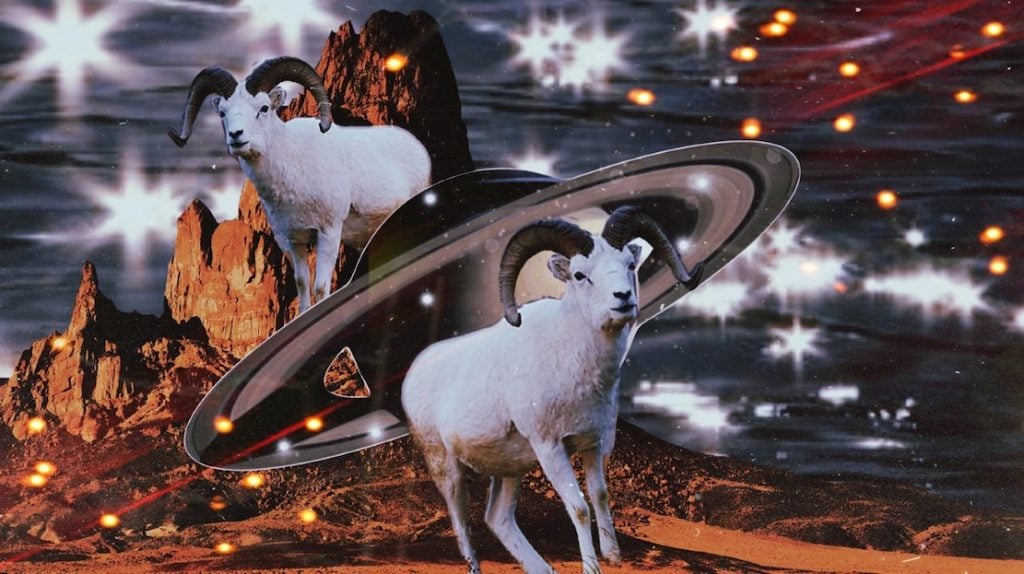
Capricorn
The concept of the Sea-Goat predates Greek culture, so it is interesting that we have to go back before the Olympian pantheon to find a myth which truly represents the spirit of Capricorn. Before Zeus took over, the titan Cronus ruled. Cronus was the god of time, and he created Pricus and his race of sea-goats.
These creatures were intelligent and honorable, but when Pricus’ children left the sea to climb on land, they lost these powers and became only animals. Like his creator, Pricus had power over time and tried to turn back time to bring his children back to their magical state of being. But no matter how many times he turned back time, the outcome was the same. Pricus was immortal but didn’t want to be the only sea-goat, so he appealed to his creator Cronus to let him die and was set in the sky as Capricorn.
This myth seems to speak to a kind of primordial watery intelligence that was lost as life evolved into more land-based, rational forms. The philosopher Jean Gebser has theorized that in order for humanity to evolve past this rational structure of consciousness, it will have to relearn the more ancient mythic and primordial states.
Aquarius
In Greek myth, Aquarius is associated with Ganymede, a beautiful boy whom Zeus abducts to be cup-bearer and member of his court at Olympus. A deeper understanding of the archetype of the water-bearer comes from the Egyptian and Mesopotamian cultures.
For the Egyptians, the god Hapi was the personification of the Nile floods and was sometimes pictured as pouring forth water from one or two vases. For the Mesopotamians, the god of waters was Ea/Enki, and by some accounts he is the “Great One” referred to in their name for Aquarius.
Ea/Enki was a trickster god who is also associated with order, such as the fixing of boundaries, assigning of roles to the other gods, and as patron of craftsmen and artists. Once again, we can see a commentary on duality, as the floods have the power to both erase the old boundaries while necessitating the creation of new ones.
Pisces
Pisces is known in Greek Mythology as the Icthyes, two large fish who either rescued Aphrodite and Eros from the monster Typhon, or whose forms were assumed by the gods in their escape.
In order not to lose each other, they tied themselves together with a cord. One interpretation of these fishes has been the polarity between good and evil, represented by the directions of the two fishes themselves: the fish swimming upward representing the spiritual plane and the fish swimming along the ecliptic representative of the material plane.
This duality between spiritual and material has been the source of widely divergent worldviews. The repression of whichever worldview is considered inferior—or even evil—results in periodic eruptions of cultural figures that force us to acknowledge both sides. It is only through the integration of opposites that wholeness and harmony are achieved.
What do the Tarot cards say about your life? Find out now. Get a FREE Tarot reading.
